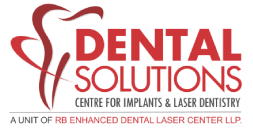- +917892951808
- Indiranagar, Bangalore
Best Dental Clinic In Bangalore Indiranagar | Best Dentist in Bangalore Indiranagar
- Home
- About Us
- Treatments
- Dental Services
- Laser Assisted Treatments
- Endodontic Treatments
- Invisalign® braces
- LANAP
- WPT
- LANAP vs WPT
- Low Level Laser Therapy
- Dental Bridges
- Dental Crown
- Dentures
- Dental Implants
- Digital Smile Design
- Gentle Ray – Dental Caries-Diagnosis
- Full Mouth Rehabilitation
- Invisible Orthodontics – Clear Path
- Dental Treatment Costs in Bangalore
- Blog
- Contact Us
Low-Level Laser
Shedding Light on Low-Level Laser

Therapy in Dentistry
In modern dentistry, technology revolutionizes treatment modalities, leading to more efficient and patient-friendly approaches. One such advancement gaining traction is Low-Level Laser Therapy (LLLT). Here, we’ll explore the applications, benefits, and emerging trends of LLLT in dentistry.
Low-Level Laser Therapy (LLLT), also known as photobiomodulation therapy or cold laser therapy, is a non-invasive medical treatment that uses low-level lasers or light-emitting diodes (LEDs) to stimulate healing and reduce pain and inflammation in various tissues.
Here's an overview of how LLLT works and its applications:
- Mechanism of Action: LLLT works on the principle of photobiomodulation, where light energy of specific wavelengths is absorbed by cells, leading to various physiological effects. The absorbed light energy enhances cellular metabolism, increases ATP production (the energy currency of cells), promotes tissue repair and regeneration, reduces inflammation, and modulates pain perception.
- Treatment Process: During an LLLT session, a handheld device emitting low-level laser or LED light is applied directly to the skin over the affected area. The light penetrates the skin and is absorbed by cells and tissues beneath, initiating the biochemical reactions that contribute to healing and pain relief. Treatment duration and frequency vary depending on the condition being treated and the specific parameters of the laser or LED device.
- Applications: LLLT has a wide range of medical and therapeutic applications, including:
- Pain Management: LLLT is commonly used to alleviate acute and chronic pain conditions such as arthritis, tendonitis, back pain, neck pain, and musculoskeletal injuries.
- Wound Healing: LLLT accelerates wound healing by promoting the formation of new blood vessels (angiogenesis), increasing collagen production, and enhancing tissue regeneration. It is used to treat chronic wounds, diabetic ulcers, burns, and surgical incisions.
- Sports Injuries: LLLT is utilized in sports medicine to speed up recovery from sports-related injuries, reduce inflammation, and improve tissue healing, allowing athletes to return to training and competition more quickly.
- Dermatological Conditions: LLLT can improve the appearance of scars, reduce acne inflammation, stimulate hair growth in cases of alopecia, and treat inflammatory skin conditions like psoriasis and eczema.
- Dental Applications: LLLT is used in dentistry for procedures such as periodontal therapy, root canal treatment, and management of temporomandibular joint (TMJ) disorders.
Applications of LLLT in Dentistry:
- Periodontal Therapy: LLLT is used in the treatment of periodontal disease to reduce inflammation, promote tissue regeneration, and aid in the resolution of gum infections. It can be employed as an adjunct to scaling and root planning procedures to enhance treatment outcomes.
- Oral Surgery: LLLT finds applications in various oral surgical procedures, including extraction socket management, soft tissue biopsies, and treatment of oral ulcers. It helps to accelerate wound healing, minimize post-operative discomfort, and reduce the risk of complications.
- Dental Implantology: LLLT is utilized in implant dentistry to promote osseointegration, the process by which dental implants fuse with the surrounding bone. By stimulating bone regeneration and reducing inflammation at the implant site, LLLT can enhance the success rate of implant procedures.
- Temporomandibular Joint (TMJ) Disorders: LLLT is effective in managing pain and inflammation associated with TMJ disorders. It can be applied externally to the temporomandibular joint area to provide relief from symptoms such as jaw pain, clicking, and limited mouth opening.
- Oral Mucosal Lesions: LLLT is beneficial in the management of oral mucosal lesions, including aphthous ulcers, herpetic lesions, and oral lichen planus. It accelerates the healing process, reduces pain, and promotes tissue repair, improving patient comfort and quality of life.
Benefits of LLLT in Dentistry:
- Non-Invasive: LLLT is a non-invasive treatment modality that does not involve incisions or anesthesia, making it well-tolerated by patients, including those with dental anxiety.
- Pain Reduction: LLLT has analgesic properties and can effectively reduce pain associated with various dental conditions, allowing patients to experience relief without the need for pharmacological interventions.
- Accelerated Healing: LLLT promotes faster tissue repair and regeneration, leading to quicker recovery times following dental procedures and minimizing post-operative complications.
- Reduced Inflammation: LLLT helps to reduce inflammation in oral tissues, creating a favorable environment for healing and resolution of oral infections.

Emerging Trends and Future Directions:
As research in LLLT continues to evolve, there is growing interest in exploring its potential applications in areas such as orthodontics, dental caries management, and the treatment of oral cancer. Advances in laser technology and treatment protocols are expected to further enhance the efficacy and versatility of LLLT in dentistry.
Conclusion:
Low-Level Laser Therapy (LLLT) holds promise as a valuable adjunctive treatment modality in dentistry, offering non-invasive, painless, and effective solutions for a wide range of dental conditions. With its ability to promote healing, reduce inflammation, and manage pain, LLLT is poised to play an increasingly significant role in improving patient outcomes and enhancing the standard of care in modern dentistry. As dental professionals embrace this innovative technology, the future of LLLT in dentistry looks bright, illuminating new possibilities for optimizing oral health and patient well-being.
Overall, Low-Level Laser Therapy (LLLT) offers a non-invasive, drug-free approach to pain management, wound healing, and various medical conditions, with potential applications across multiple healthcare specialties. As research in this field continues to evolve, LLLT holds promise as a valuable therapeutic modality for enhancing patient outcomes and quality of life.
